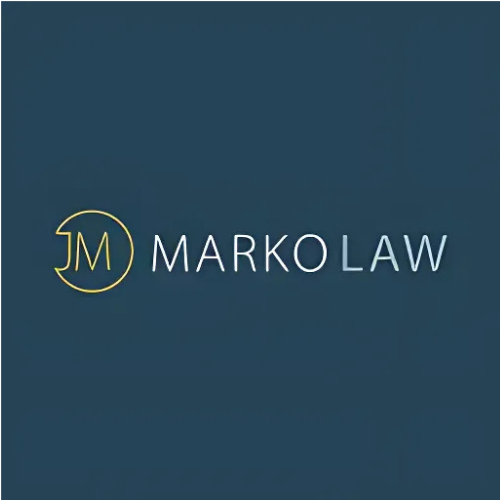Age discrimination in employment occurs when an employee or job applicant is treated unfairly or less favorably because of their age. In the United States, this form of discrimination typically affects individuals aged 40 and older, who are protected under federal and state laws. Age discrimination can occur at various stages of employment, including during the hiring process, promotions, and even day-to-day treatment in the workplace. It undermines the value and contributions of older workers, often driven by stereotypes or misconceptions about age.
Types of Age Discrimination:
- Direct Discrimination: Direct age discrimination involves explicit unfavorable treatment of an individual due to their age. This may include being passed over for a job, promotion, or training opportunity in favor of a younger employee. For example, an employer might decide not to hire a well-qualified candidate simply because they believe the candidate is "too old" or that a younger person would be more "energetic" or "innovative." Learn more about discrimination protections here.
- Indirect Discrimination: Indirect age discrimination occurs when workplace policies or practices that appear neutral on the surface disproportionately disadvantage older employees. For example, a company may implement a policy requiring employees to be proficient in a new digital tool without providing adequate training, which could disproportionately affect older workers who may not have been exposed to the technology earlier in their careers. While the policy itself may not mention age, it can unfairly impact older employees. Learn more about indirect discrimination under the Elliott-Larsen Civil Rights Act.
- Harassment: Age-based harassment involves offensive remarks, jokes, or actions that target an individual’s age, creating a hostile work environment. This can include derogatory comments about an employee being "too old" to learn new skills or suggestions that they are no longer fit for their job due to their age. Such comments, even if made casually, can have a significant negative effect on an employee’s morale and performance, making the workplace uncomfortable and even intolerable.
- Retaliation: Retaliation occurs when an employer takes negative actions against an employee for reporting or challenging age discrimination. Retaliation can include being demoted, reassigned to a less desirable role, or even terminated after filing a complaint about age-related bias. Retaliation is illegal, and employees are protected under both federal and state laws from being punished for asserting their rights against age discrimination. Understand protections under the Age Discrimination in Employment Act (ADEA).
Legal Protections Against Age Discrimination
Federal Laws:
- Age Discrimination in Employment Act (ADEA): The ADEA, enacted in 1967, is the primary federal law that prohibits age discrimination in the workplace for individuals aged 40 and older. The ADEA applies to employers with 20 or more employees and makes it illegal to discriminate against older employees in all aspects of employment, including hiring, promotions, job assignments, compensation, and termination. Under the ADEA, employers cannot refuse to hire or promote someone solely based on their age, nor can they terminate or demote an employee due to age-related biases. Additionally, the ADEA prohibits employers from setting age limits for training or job programs unless age is proven to be a valid occupational qualification. Visit the EEOC’s website to learn more about ADEA protections.
- Older Workers Benefit Protection Act (OWBPA): The OWBPA is an amendment to the ADEA that specifically protects older workers in decisions related to benefits, severance packages, and retirement plans. This law ensures that older employees are not unfairly targeted or pressured into retirement or accepting reduced benefits based on their age. The OWBPA also sets specific guidelines that must be followed when employers offer severance agreements to older workers, including providing employees with sufficient time to review the agreement and seek legal counsel before waiving their rights under the ADEA.
Michigan State Laws:
- Elliott-Larsen Civil Rights Act (ELCRA): In Michigan, the Elliott-Larsen Civil Rights Act expands on federal protections by making age discrimination illegal at the state level. The ELCRA applies to all Michigan employers, regardless of size, and prohibits discrimination based on age, as well as race, sex, religion, national origin, and other protected categories. The law covers all aspects of employment, including hiring, promotion, compensation, and termination, ensuring that older employees have equal opportunities in the workplace. It also explicitly forbids retaliation against employees who report or challenge age discrimination. Read more about Michigan’s Elliott-Larsen Civil Rights Act.
How These Laws Work Together:
Federal and state laws work in tandem to provide comprehensive protection against age discrimination for employees in Michigan. While the ADEA and OWBPA provide nationwide protections for workers over 40, the Elliott-Larsen Civil Rights Act extends these protections to all Michigan employees and offers additional legal recourse. Together, these laws ensure that older employees aren’t subjected to biased treatment and can seek justice through the EEOC or the Michigan Department of Civil Rights (MDCR).
Recognizing Age Discrimination in the Workplace
Examples of Age Discrimination:
- Denial of Promotions or Opportunities Due to Age: One of the most direct forms of age discrimination is denying promotions, career advancement, or professional development opportunities to employees simply because they are considered "too old." For example, an older employee might be passed over for a management position in favor of a younger, less experienced colleague, based on the stereotype that younger workers are more dynamic or innovative.
- Unfair Performance Evaluations or Disciplinary Measures Based on Age Stereotypes: Older employees may also be subject to biased performance evaluations or disciplinary actions. For instance, an employer might assume that an older worker is less capable of adapting to new technologies or procedures, leading to unfairly negative evaluations. Similarly, older employees may face harsher disciplinary measures for mistakes or minor infractions that younger employees might be excused for.
- Comments or Jokes About an Employee Being "Too Old" for Certain Tasks or Technologies: Age-based harassment, including derogatory comments or jokes, can create a hostile work environment. For example, colleagues or supervisors may make offhand remarks about an employee being "too old" to learn new skills, use modern technology, or perform physical tasks. Even if these comments are made in jest, they can undermine the employee’s confidence and contribute to a toxic workplace culture.
- Pressuring Older Workers Into Early Retirement: Employers may try to push older workers into early retirement, either through direct pressure or by making their work environment uncomfortable. This might involve offering financial incentives to retire early or making it clear that the company prefers younger workers. In some cases, employers may create conditions that make it difficult for older employees to continue working, such as reducing their hours or shifting them to less desirable positions.
Subtle Forms of Age Discrimination:
Not all age discrimination is overt. Implicit biases—unconscious attitudes or stereotypes about older workers—can also contribute to discriminatory practices in more subtle ways. For example:
- Assumptions About an Older Worker’s Ability to Learn New Skills: Employers may assume that older employees are less capable of adapting to new technologies or methods, even when there is no evidence to support this. This bias can result in older workers being passed over for training opportunities or promotions because of the assumption that they are less adaptable or flexible than younger employees.
- Exclusion from High-Profile Projects or Decision-Making Roles: Older workers may find themselves excluded from important meetings, decision-making roles, or high-profile projects because of the perception that they are "out of touch" with current trends or industry developments. This can limit their opportunities for professional growth and career advancement.
- Favoritism Toward Younger Workers: Even if it’s not explicitly stated, favoritism toward younger workers can manifest in subtle ways, such as offering younger employees more opportunities for mentorship, networking, or leadership roles, while older employees are sidelined.
Steps to Take if You Experience Age Discrimination
Document the Incidents
The first step in handling age discrimination is to document every instance of discriminatory behavior. This is crucial for building a strong case, whether you decide to report the issue internally or pursue legal action. When documenting, be sure to include:
- Dates and times of each incident.
- Details of what happened, including specific comments, actions, or decisions that you believe were discriminatory.
- Names of witnesses who were present during the incidents or who might be able to corroborate your claims.
- Emails, text messages, or other written communications that contain discriminatory language or show evidence of bias based on age.
Report the Issue to HR
Once you have documented the incidents, the next step is to report the issue to your company’s HR department or follow any internal procedures that your organization has in place for handling discrimination complaints. Filing a formal complaint with HR ensures that the company is aware of the issue and gives them an opportunity to investigate and address the discrimination.
- File a written complaint that clearly outlines the incidents of age discrimination you’ve documented.
- Request that HR investigate the issue and provide a resolution.
- Keep a copy of your complaint and any communication you have with HR regarding the matter.
Seek Legal Counsel
If your company does not adequately resolve the issue or if you experience retaliation for reporting discrimination (such as being demoted, reassigned, or terminated), it’s important to seek legal counsel. Consulting with an attorney who specializes in employment law can help you better understand your rights and evaluate your options.
- An attorney can review your case and provide guidance on whether you have grounds for legal action. Contact Marko Law for assistance with age discrimination claims.
- They can help you gather evidence and ensure that you are following the appropriate legal steps to protect your rights.
- Legal counsel can also assist you in pursuing compensation for lost wages, emotional distress, or other damages resulting from age discrimination.
Filing a Charge with the EEOC or MDCR
If internal reporting does not lead to a resolution, you may choose to file a formal complaint with a government agency. Two key agencies handle age discrimination complaints: the Equal Employment Opportunity Commission (EEOC) and the Michigan Department of Civil Rights (MDCR).
- Filing a charge with the EEOC:
- The EEOC is a federal agency that enforces laws prohibiting age discrimination, including the Age Discrimination in Employment Act (ADEA). You must file a charge with the EEOC within 180 days of the discriminatory event, though this may be extended to 300 days if state laws are also involved.
- Once the EEOC receives your charge, they will investigate the claim and may attempt to mediate a settlement between you and your employer. If the EEOC finds that discrimination occurred, they may issue a "right to sue" letter, allowing you to file a lawsuit.
- Filing a charge with the MDCR:
- The MDCR enforces the Elliott-Larsen Civil Rights Act, which protects Michigan employees from age discrimination. You have 180 days from the date of the incident to file a charge.
- The MDCR will investigate your complaint, and if they find that age discrimination occurred, they may help you pursue mediation, conciliation, or even legal action in state court.
Contact Marko Law Today
Addressing age discrimination in the workplace is crucial to maintaining a fair and inclusive environment. By recognizing the signs of discrimination and understanding your legal rights, you can take appropriate action to protect yourself and hold employers accountable. Acting quickly—whether by documenting incidents, reporting to HR, or seeking legal counsel—ensures that your rights are protected and that discriminatory practices do not go unchallenged.
If you or someone you know has experienced age discrimination in the workplace, Marko Law is here to help. Our experienced legal team is dedicated to protecting your rights and ensuring you receive the compensation and justice you deserve. Contact us today for a free consultation.
Call 1-833-MARKO-LAW or +13137777777 to schedule your consultation.
Visit us at our main office: 220 W. Congress, 4th Floor, Detroit, MI 48226.
https://www.markolaw.com/









.svg)








